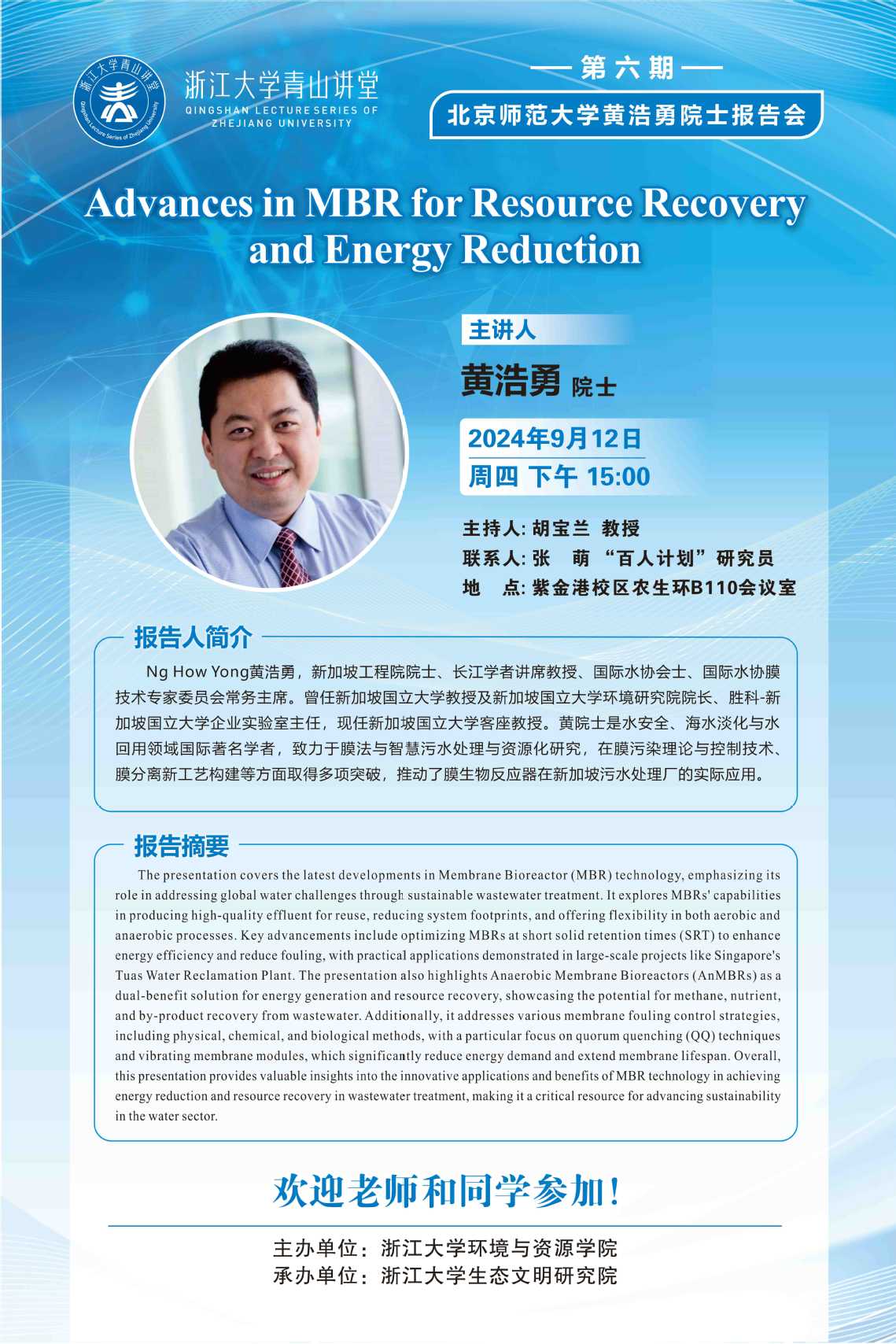“青山讲堂”主题讲座立足于人与自然和谐共生的理念,聚焦生态文明建设。其中“青山”取自于习近平总书记“绿水青山就是金山银山”这一科学论断,体现了生态环境保护与经济社会发展的辩证统一关系。
“青山讲堂”活动秉持传播思想,启迪智慧的宗旨,邀请学术大师分享生态环境领域的发展现状和趋势、前沿科学问题与关键工程技术。通过杰出学者的经验分享讲座,构建青年学子与学术大师的交流平台,激发青年学子在科研道路上的创新精神,培养青年学者的思维和实践能力,促进青年学者成长。
第六期“青山讲堂”主题讲座我们有幸邀请到黄浩勇院士做主题为“Advances in MBR for Resource Recovery and Energy Reduction”的报告。

讲座内容
The presentation covers the latest developments in Membrane Bioreactor (MBR) technology, emphasizing its role in addressing global water challenges through sustainable wastewater treatment. It explores MBRs' capabilities in producing high-quality effluent for reuse, reducing system footprints, and offering flexibility in both aerobic and anaerobic processes. Key advancements include optimizing MBRs at short solid retention times (SRT) to enhance energy efficiency and reduce fouling, with practical applications demonstrated in large-scale projects like Singapore's Tuas Water Reclamation Plant. The presentation also highlights Anaerobic Membrane Bioreactors (AnMBRs) as a dual-benefit solution for energy generation and resource recovery, showcasing the potential for methane, nutrient, and by-product recovery from wastewater. Additionally, it addresses various membrane fouling control strategies, including physical, chemical, and biological methods, with a particular focus on quorum quenching (QQ) techniques and vibrating membrane modules, which significantly reduce energy demand and extend membrane lifespan. Overall, this presentation provides valuable insights into the innovative applications and benefits of MBR technology in achieving energy reduction and resource recovery in wastewater treatment, making it a critical resource for advancing sustainability in the water sector.
主讲人简介
Ng How Yong黄浩勇,新加坡工程院院士、长江学者讲席教授、国际水协会士、国际水协膜技术专家委员会常务主席。曾任新加坡国立大学教授及新加坡国立大学环境研究院院长、胜科-新加坡国立大学企业实验室主任,现任新加坡国立大学客座教授。黄院士是水安全、海水淡化与水回用领域国际著名学者,致力于膜法与智慧污水处理与资源化研究,在膜污染理论与控制技术膜分离新工艺构建等方面取得多项突破,推动了膜生物反应器在新加坡污水处理厂的实际应用。


